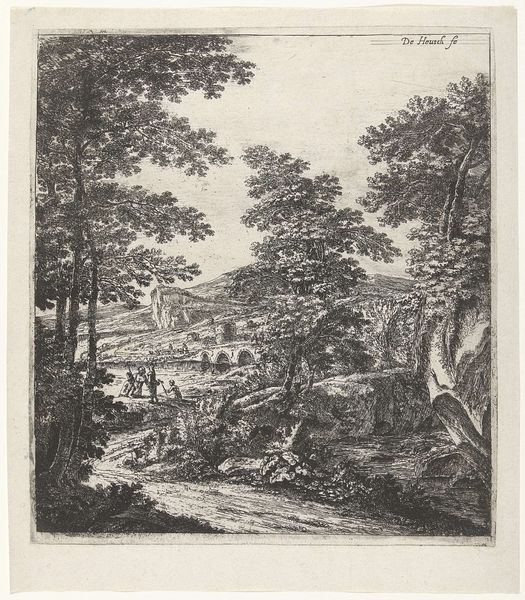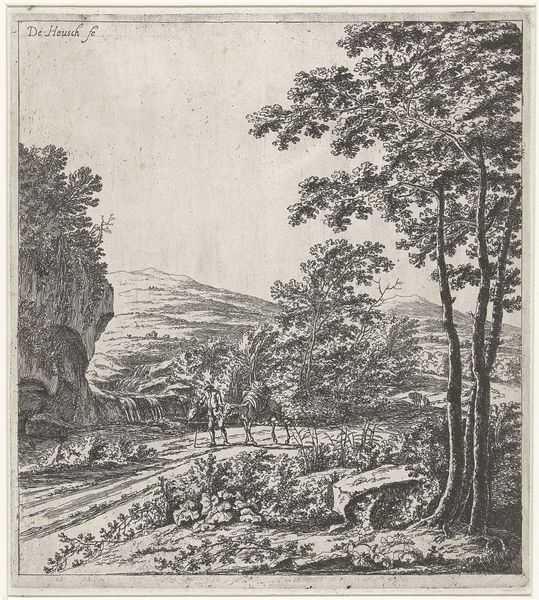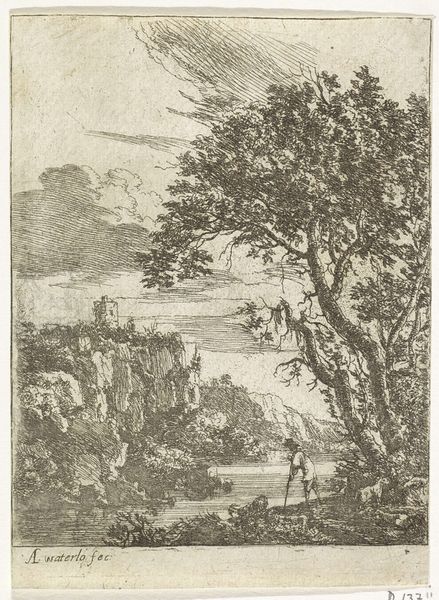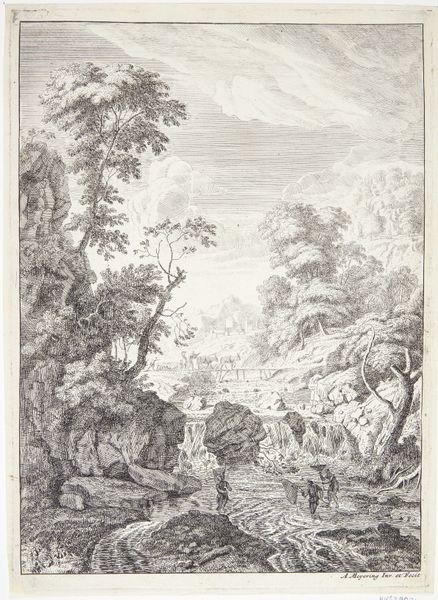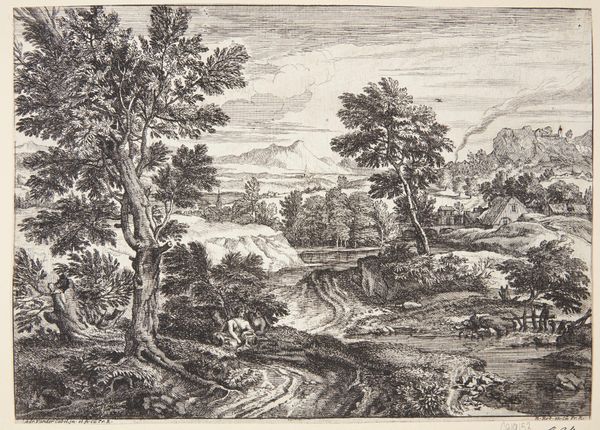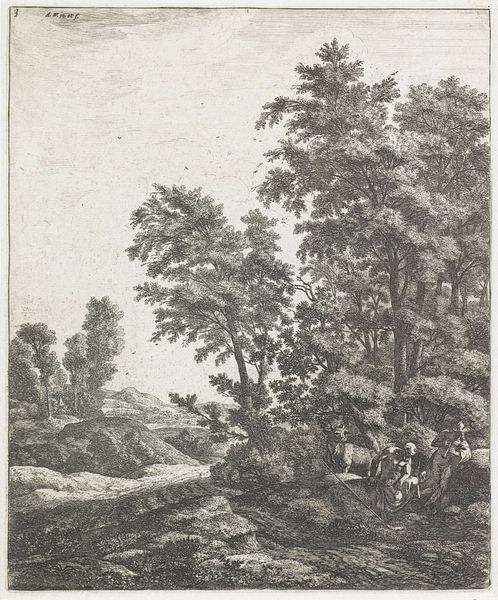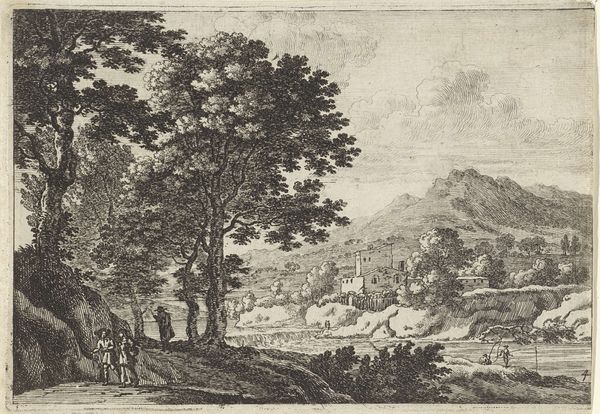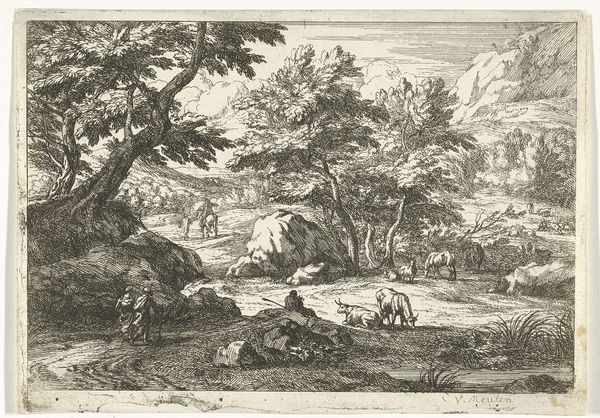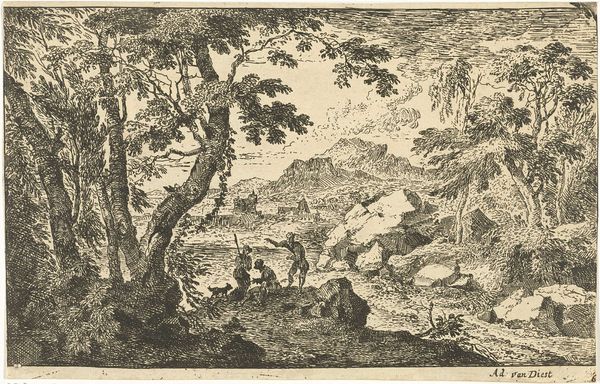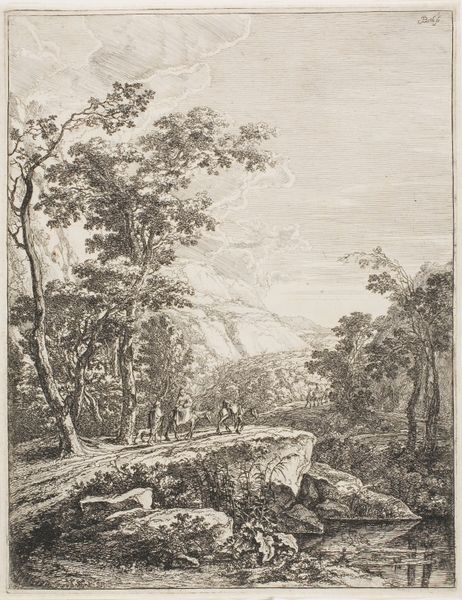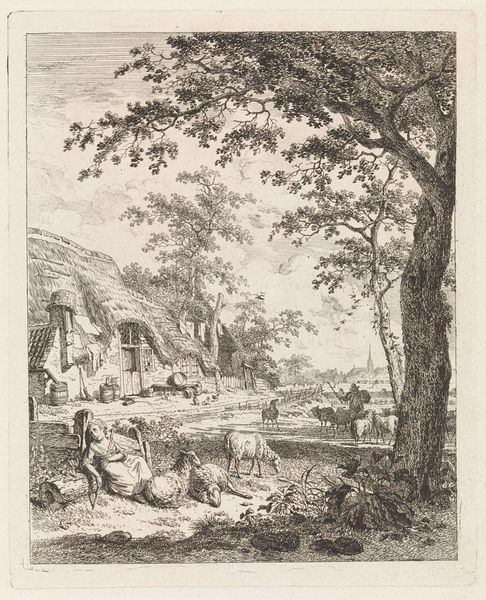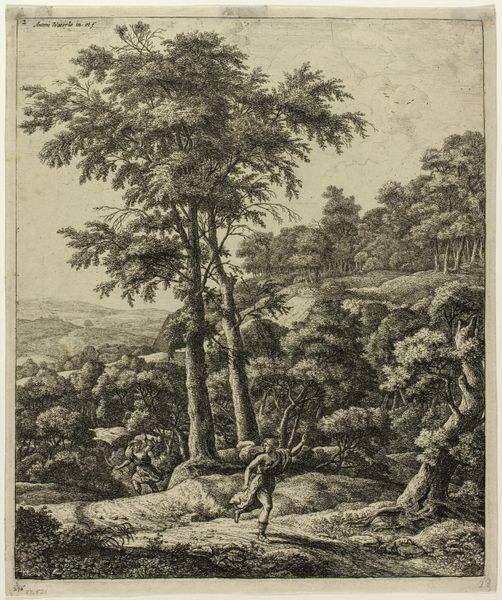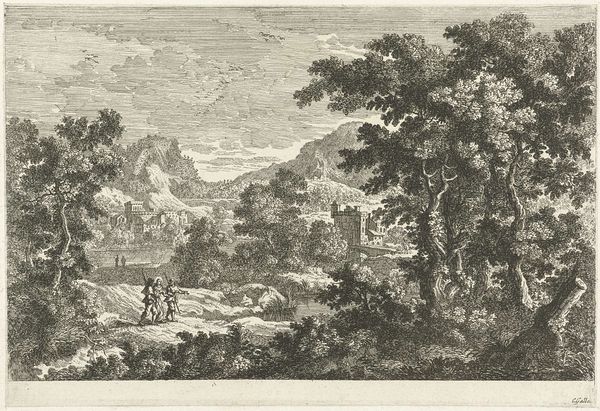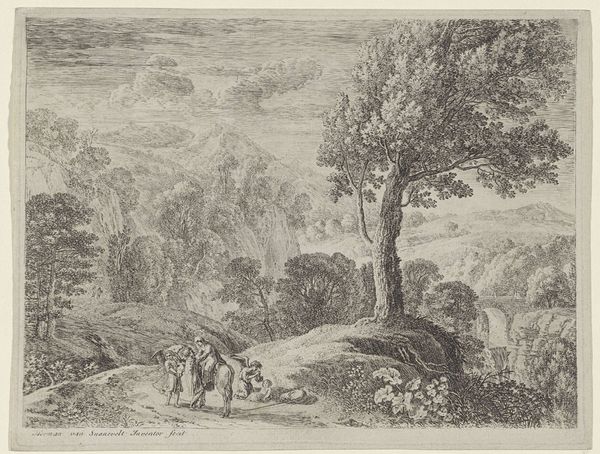
drawing, print, etching, paper
#
drawing
#
dutch-golden-age
# print
#
etching
#
landscape
#
paper
#
genre-painting
Dimensions: 268 × 210 mm
Copyright: Public Domain
Editor: This is Jan Both's "The Ox-Cart, from Upright Italian Landscapes," created sometime between 1638 and 1652. It's an etching on paper. I’m really struck by the contrast between the detailed foreground and the more hazy background; it feels very theatrical, almost like a stage set. What do you see in this piece? Curator: The “stage set” feeling is astute. Landscape, especially Italianate landscape, evolved as a genre laden with symbolism. Look at the figures; what feeling do they evoke? These weren't simply picturesque scenes. The staff held by the central figure might point towards pilgrimage, connecting earthly travel to spiritual journey. The ox-cart, in its laborious task, perhaps references the struggles of human existence. Editor: That’s interesting; I hadn’t thought of the individuals in that way, I was looking past them at the trees and mountains in the background. So even ordinary figures were loaded with meaning? Curator: Precisely. And consider the light – it's not just atmospheric. The specific placement can highlight virtues or spiritual truths. For example, does the path to the town symbolize opportunity, hope, or a perhaps something more ambiguous? Even the very act of representing Italy during the Dutch Golden Age reflects cultural aspirations and perhaps, a touch of nostalgia or even longing. Editor: So it's not just a pretty scene, it’s about cultural memory and ideals being constructed? Curator: Absolutely. Both used the landscape not just to represent Italy but to communicate Dutch ideas, ideals and desires through carefully chosen symbols. Consider how easily recognizable landscape became symbolic shortcuts over time. Editor: That really changes how I see it! It makes it feel much more deliberate. Curator: Indeed. It's a beautiful illustration of how landscapes carry within them complex narratives if you can understand the iconography of the time.
Comments
No comments
Be the first to comment and join the conversation on the ultimate creative platform.
